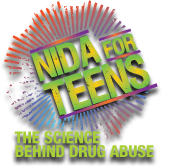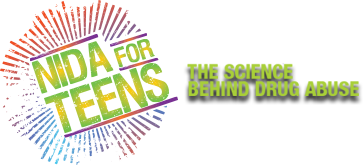
Questions about drugs? Lots of teens are asking. That’s why each year, NIDA scientists spend a day chatting online with high school students and answering their questions.
At the last Drug Facts Chat Day, “Boxy” from St. Henry District High School in Kentucky asked:
What are designer drugs?
The term “designer drugs” refers to drugs that are created in a laboratory (typically, an “underground,” or secret, illegal lab). A designer drug is created by changing the properties of a drug that comes from a plant—such as cocaine, morphine, or marijuana—using the tools of chemistry. The resulting “designer” drugs typically have a new, different effect on the brain or behavior.
Examples of Designer Drugs
MDMA (Ecstasy), ketamine, GHB, Rohypnol, LSD (acid), and methamphetamine are some examples of designer drugs. These drugs may also be referred to as “club drugs” because of their use in night clubs.
Since many designer drugs are created in illegal labs, their ingredients and potency (how strong they are) vary a lot, making it nearly impossible to know what is actually in them or what they can do to you. For example, Ecstasy tablets are often contaminated with other things, like ephedrine (used to treat allergies and asthma), ketamine (an injected anesthetic given for minor surgeries), and methamphetamine (another illicit drug).
It is not surprising that these unknown mixtures can cause dangerous side effects, such as seizures, memory loss, coma and even death.
Find out more about club drugs.





Comments
Check out http://www.drugabuse.gov/drugs-abuse/emerging-drugs.
Drugs are bad mmmmkay
Pages
Add new comment